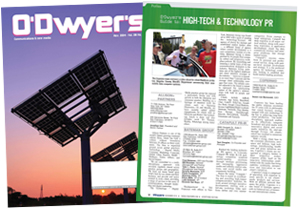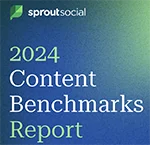 Content and media are omnipresent and demand our attention. There are no shortages of mobile devices either, and everyone with a device is a content creator, which adds to the surplus of content generated each day. As consumers of content, we are subjected to 3,000 advertising messages per day. This doesn’t include other forms of content such as blog posts, status updates, tweets, videos, emails, text messages, etc.
Content and media are omnipresent and demand our attention. There are no shortages of mobile devices either, and everyone with a device is a content creator, which adds to the surplus of content generated each day. As consumers of content, we are subjected to 3,000 advertising messages per day. This doesn’t include other forms of content such as blog posts, status updates, tweets, videos, emails, text messages, etc.
Of course, most of us can barely consume, much less comprehend, 285 pieces of content in a given day. This attention deficit is the same reason why the average Facebook user has about 300 friends. Our brains are wired so that we can only consume a finite amount of information. The same is true with maintaining online relationships. Multitasking and having multiple devices is a cultural norm.
There is also a significant delta between the amount of content in front of us and our ability to understand and interact with it. This is why we have tunnel vision. It’s a natural defense mechanism so that we don’t get too overwhelmed with everything going on around us. It allows us to consume content that is relevant to us at a very specific moment in time, and often times, our relevancy filter changes each moment. If you have ever been in the market to purchase a new car, you might have experienced this firsthand.
|
|
Finally, when it comes to purchasing products, there is no clear method to our madness. We may do research online, ask a trusted friend or conduct a poll on our Facebook page, i.e. thinking about an Android or iPhone. What do you all recommend? And the very next day, we may do the complete opposite. But one thing is for certain; our purchase path is open-ended and dynamic based on the types of products and services that we buy each day. What is predictable though is that our consumption patterns when we buy, research or just read content online are in fact, unpredictable.
Internally, brands have different challenges. A 2013 report from the Content Marketing Institute highlighted that 78% of B2B marketers have a hard time creating original content. And 44% of them do not have a documented content strategy.
If you look at the aforementioned external factors and couple that with the internal challenges that face many marketers today, it becomes clear that it’s not easy reaching a specific audience online; it’s almost impossible.
Getting the content right
Content is how we reach a specific audience online in order to change a behavior. It’s the gateway into the social ecosystem. But the reality is that the external landscape will not change just because your engagement numbers are low. And, it’s only going to get worse.
So, in order to adapt, you’ll need to evolve the way you think, operate and communicate with your customers and prospects. This means that you’ll have to change your content approach or adopt one. The reason why many of us struggle with content, storytelling, and being able to scale our operations is because we don’t take content serious enough. Many times it’s an afterthought.
Content isn’t a box you check, a bubble you fill in, or a bullet point on a presentation. It’s more than search, more than real-time content and so much more than building a content marketing strategy in a silo. And you can only learn so much about content from clever blog titles like “10 Proven Tips to Do This” or “5 Smart Tricks to Do That.”
Just as there is an art to storytelling, there also needs to be a strategic and operational plan that can help you create and distribute content; integrate it across paid, earned, shared and owned media; and measure it effectively. As a marketer or a brand manager you must move beyond the content marketing buzzword and commit to becoming a brand publisher.
Introducing content as a service (CaaS)
The CaaS model is meant to address and solve for both the external challenges of reaching your target audience, and also the barriers you face internally. The goal of CaaS is to ensure that content is considered a strategic imperative for business today, making it key for business and marketing objectives.
The model is broken down by four separate work streams — grounded in analytics — and supported by an operational framework that’s meant to facilitate integration at key touch points.
Social narrative development. Both a quantitative and qualitative analysis are needed to craft a story that can break through the clutter, reach new audiences and to tell a better story than your competitors.
Social channel strategy. Brands struggle with social media because they are using it just to amplify and distribute all content and tell every story in every channel. This approach dilutes the message and contributes to the content surplus that many people ignore. A social channel strategy aligns specific brand stories with digital channels to ensure high quality storytelling.
Participatory storytelling. Brand storytelling is more than just distributing branded content, native advertising or creative campaigns on Facebook. It also involves mobilizing employees and customers to participate and feed the content engine with relevant stories told through their lens.
Content performance and analysis. Rather than measuring content (status update, press release, blog post, tweet) at the “social network” level, there is more value measuring content at the actual content level. At WCG, we use what call the Branded Scoring Content Approach where we score each piece of content that gets published online on a 1-100 scale. High performing content ranks higher on the scale, low performing content ranks lower.
Content Operational Framework. This is an operational step that spans across each of the four work streams above. It’s a consultative approach that helps our clients structure their teams, assign roles & responsibilities with internal stakeholders and others agency partners, invest in the right technology and build a content supply chain (editorial process that facilitates the movement of content from ideation to distribution) that can scale. Essentially, it’s helping brands build a newsroom organization.
* * *
Michael Brito is a Group Director at WCG, a W2O Group company.



 What if companies could harness the fury of online outrage into a force for good? This is precisely where companies can start turning the trolls into brand champions.
What if companies could harness the fury of online outrage into a force for good? This is precisely where companies can start turning the trolls into brand champions. Audiences interacted with brand content far more often on Facebook and Instagram in 2023 than they did via X (formerly Twitter), according to a report that tracked engagement trends across different social networks.
Audiences interacted with brand content far more often on Facebook and Instagram in 2023 than they did via X (formerly Twitter), according to a report that tracked engagement trends across different social networks. Can public relations help counteract the dissension fostered by the power of digital platforms to spread hate, fear and confusion?
Can public relations help counteract the dissension fostered by the power of digital platforms to spread hate, fear and confusion? The number of Americans who get their news from TikTok has quadrupled in the last three years, according to a recent Pew Research Center report.
The number of Americans who get their news from TikTok has quadrupled in the last three years, according to a recent Pew Research Center report.


 Have a comment? Send it to
Have a comment? Send it to 
No comments have been submitted for this story yet.